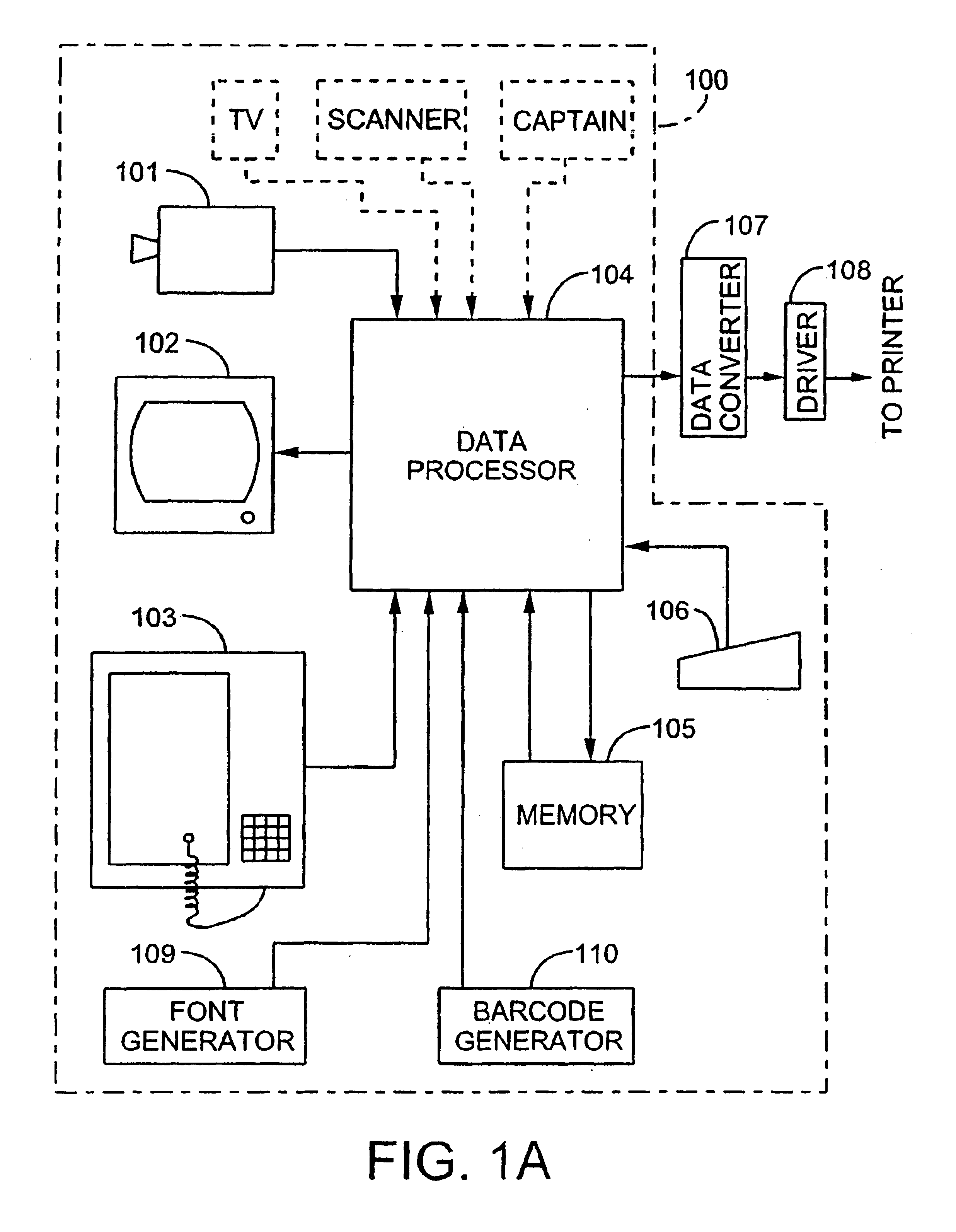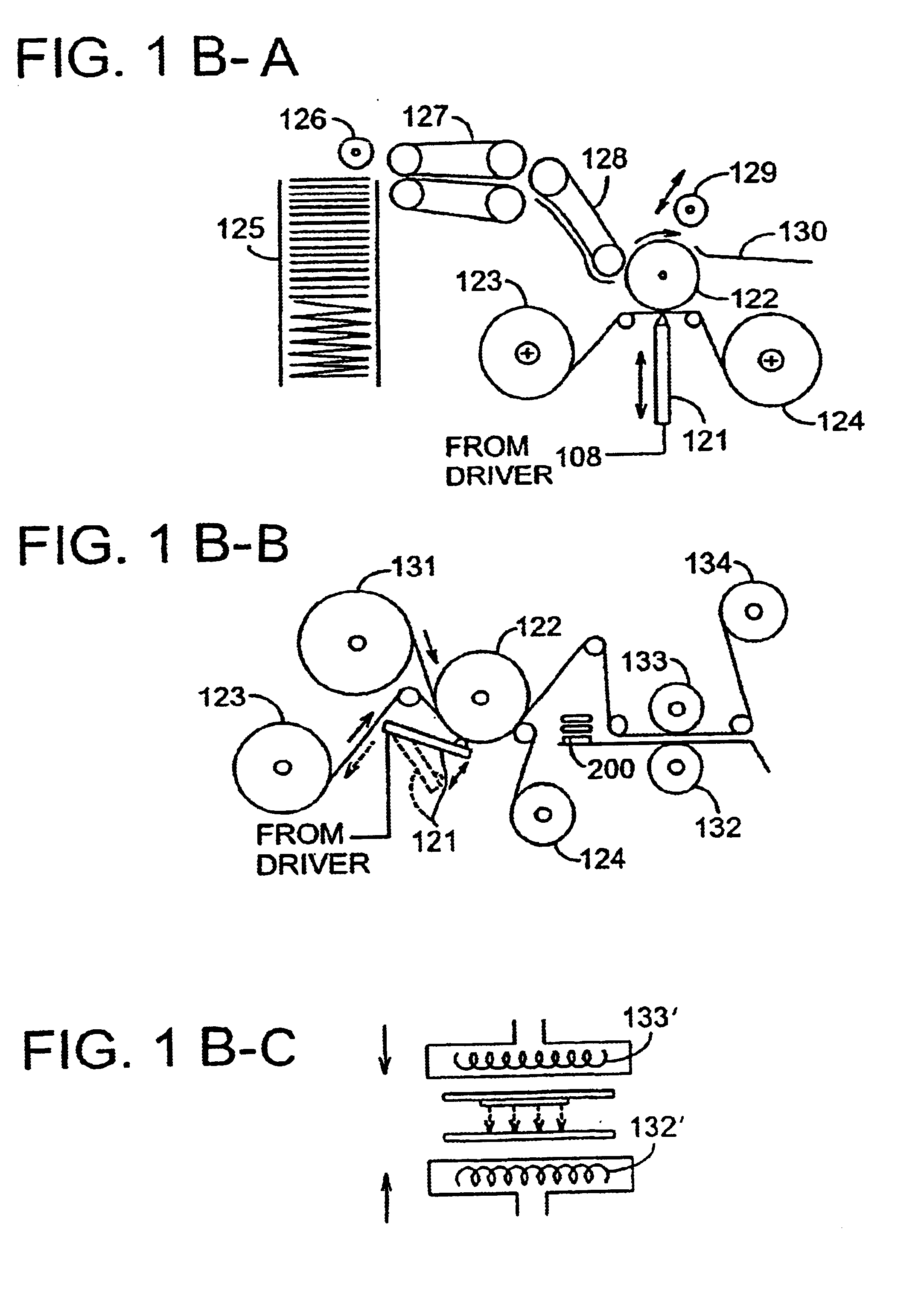Image formation on objective bodies
- Summary
- Abstract
- Description
- Claims
- Application Information
AI Technical Summary
Benefits of technology
Problems solved by technology
Method used
Image
Examples
example a-1
[0259]As the substrate, a laminate of a synthetic paper, “Yupo FPG 150 μm thick” manufactured and sold by Oji Yuka Co., Ltd., Tokyo, and a polyester film, 6 μm thick, was prepared and coated on the polyester film side surface by a wire bar with a mixture of pull-separating varnish, “Hakurinisu 45” manufactured and sold by Showa Ink Co., Ltd., Tokyo, with an ultra-violet absorbing agent, or more specifically, 2.5-bis(5′-tert-butylbenzoxazolyl (2))-thiofin, 0.5% based on the resin content of the varnish, and dried up to provide a protecting layer of 1 g / m2, when weighed upon drying.
[0260]Then, on the surface of the foregoing protecting layer, an ink composition adapted for the formation of an image-reception layer was coatingly applied and dried up. The applied quantity amounted to 7 g / m2 when measured upon drying.
[0261]
Ink composition for the formation of image-reception layerpolyester resin100 parts;(manufactured and soldby Toyobo K.K.)amino-modified silicone 5 parts;(“KF-393”, manu...
example a-2
[0266]The foregoing image-transferable sheet, now image-carrying, as processed in Example A-1, is then subjected to a peel-off operation for separating the image-carrying layer from the sheet. Then, an adhesive agent of polyester series was coated on the exposed surface of the peeled-off film, and stuck under pressure on a curved surface part of a telephone set. The images could follow up to the stuck curvature into a unitary solid mass, and indeed, without inviting any stuck-on feeling, contrary to the case when a sticky loose-leaf stamp should have been stuck on. In this way, miracle viewing feelings as obtainable with direct-printing operation only, were created and maintained.
example a-3
[0267]A white polyester film, baked on one surface thereof with melamine coating, “E 20”, 100 μm thick, manufactured and sold by Toray Co., Ltd. Tokyo, is formed on the opposite surface with a slipping layer, same as in the following Example C-2, through application of polyurethane primer. And an identification mark was provided thereon through the way of regular printing technique. On the melamine resin-baked surface of the white polyester resin film, a layer of peeling varnish (of polymethyl methacrylate-series), manufactured and sold by Showa Inku. Co., Ltd., Tokyo) was applied in dry quantity of 2 g / m2 and dried up to provide a definite layer.
[0268]On the thus-formed protecting layer, the following image-reception layer-forming composition was coated and dried up, so as to form an image-heat transferable sheet. The coated composition was in quantity of 6 g / m2 by dry weight.
[0269]
Image-reception layer-forming compositionpolyester resin 80 parts;(“Vylon 600”, Tg: 47° C.,manufactur...
PUM
| Property | Measurement | Unit |
|---|---|---|
| Temperature | aaaaa | aaaaa |
| Fraction | aaaaa | aaaaa |
| Fraction | aaaaa | aaaaa |
Abstract
Description
Claims
Application Information
 Login to View More
Login to View More - R&D
- Intellectual Property
- Life Sciences
- Materials
- Tech Scout
- Unparalleled Data Quality
- Higher Quality Content
- 60% Fewer Hallucinations
Browse by: Latest US Patents, China's latest patents, Technical Efficacy Thesaurus, Application Domain, Technology Topic, Popular Technical Reports.
© 2025 PatSnap. All rights reserved.Legal|Privacy policy|Modern Slavery Act Transparency Statement|Sitemap|About US| Contact US: help@patsnap.com



